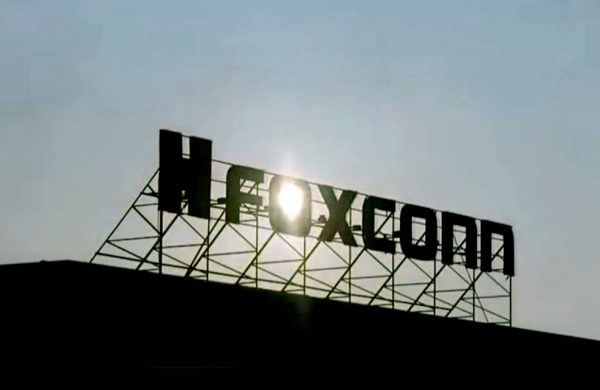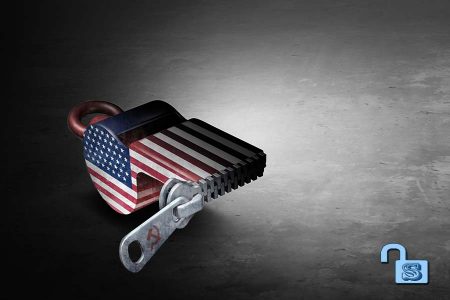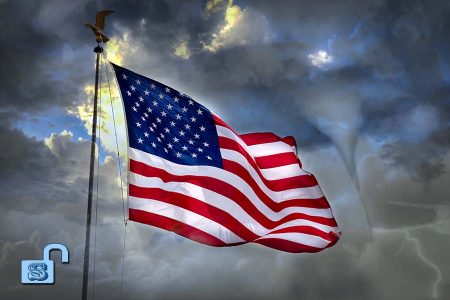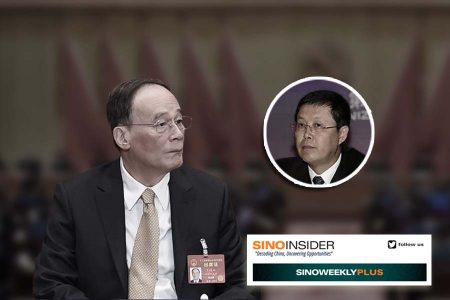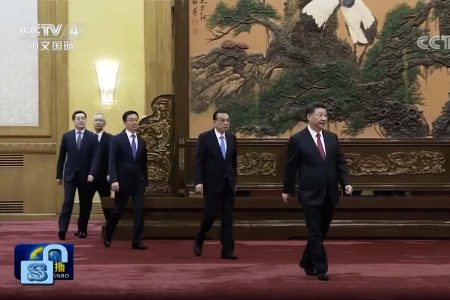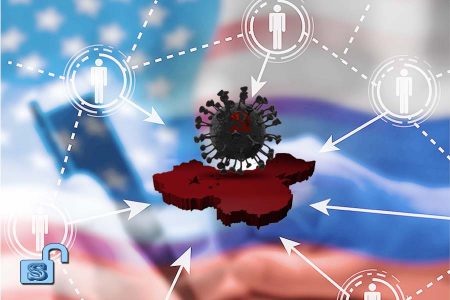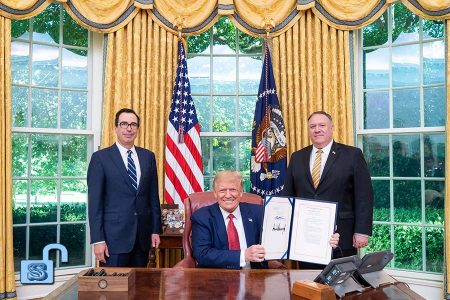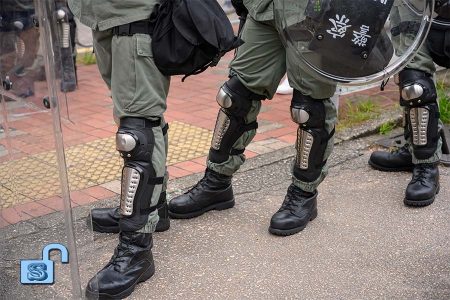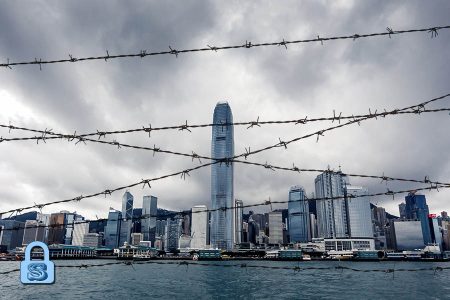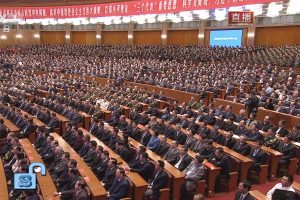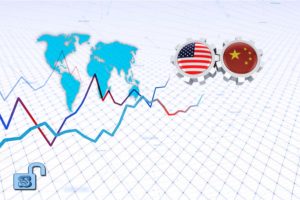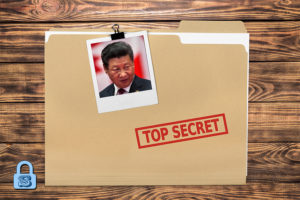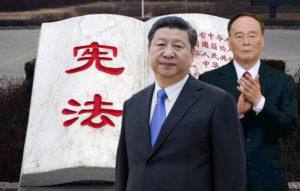◎ We received reliable information that Foxconn decided to build its new LCD factory in the U.S. last year after receiving an invitation from the American authorities.
In January, Foxconn shareholders approved a plan to list its subsidiary, Foxconn Industrial Internet Co. Ltd. (FII), on the Shanghai Stock Exchange. On Feb. 9, the China Securities Regulatory Commission issued a prospectus for FII’s initial public offering (IPO).
Some points to note:
1. FII’s holding company is Zhejiang Zhongjian Technology Co. Ltd., which owns 41.14 percent of FII’s shares. Zhongjian Technology, an investment holding company, is in turn wholly owned by Hon Hai Precision Industry Co. Ltd. (Hon Hai trades as Foxconn Technology Group). Hon Hai is listed in mainland China via the Foxconn Group in Shenzhen, and Zhongjian Technology is Shenzhen Foxconn’s investment holding company.
2. Established in March 2015, FII (formerly known as Fujiang Technology) makes industrial robots, electronic devices, and cloud service equipment. In March 2017, Shenzhen Foxconn invested $500 million in Fujiang Technology and increased its stake to 25 percent. Four months later, Fujiang was renamed FII, and the company then added 33 new stakeholders. FII’s largest institutional shareholder is Zhongjian Technology, while its largest individual shareholder is Foxconn vice president Xu Muji.
Before its Shanghai IPO was announced, FII received a large-scale capital injection from its parent company and became a business group through the acquisition of 13 domestic subsidiaries. FII’s authorized capital rose from 137 million yuan (about $21.6 million) to 17.725 billion yuan, or a 136 times increase. Presently, FII directly or indirectly controls Foxconn’s 31 domestic subsidiaries and 29 overseas subsidiaries.
3. According to Article 9 of China’s IPO regulations (“Measures for the Administration of Initial Public Offering and Listing of Stocks”), a joint stock company has to continually be in business for at least three years in the country before it is allowed to get listed. China’s State Council, however, can issue an exemption for companies that don’t fulfill this criterion.
FII’s IPO prospectus notes that the company had sought an exemption from the Chinese authorities.
4. According to the prospectus, FII’s revenue in 2017 was 355.4 billion yuan, and 75 percent of its revenue came from its top five customers (the customers weren’t named). The company’s total assets was 148.6 billion yuan, has total liabilities of 120.4 billion yuan, and its gross profit margin for 2017 was 10.14 percent (down from 10.65 percent a year ago). FII has nearly 270,000 employees.
5. FII’s listing prospectus said that it is looking to raise funds for eight next-generation projects (total 27.3 billion yuan investment):
- Internet and high-performance computing platforms
- Communications networks
- Cloud computing services
- 5G solutions
- Data centers
- Internet of Things solutions
- Artificial intelligence manufacturing
- Intelligent manufacturing capacity expansion
6. FII has assembled a star team to handle its IPO. China International Capital Co. Ltd. is FII’s sponsor, while PricewaterhouseCoopers and Jonten Certified Public Accountants (limited liability partnership) oversee accounts. Beijing Zhonghua China Assets Appraisal Co. Ltd. handles asset evaluation.
Why it matters:
An analysis of Foxconn’s decision to go public in China at this time reveals the difficulties and dangers facing China’s manufacturing sector and economy in the new phase of Sino-U.S. relations.
The big picture:
1. On July 26, 2017, Hon Hai CEO Terry Gou and U.S. President Donald Trump announced Foxconn’s plan to invest US$10 billion in America over the next four years to build a new liquid crystal display (LCD) plant in Wisconsin. The plant is expected to create 3,000 new jobs opportunities and employ 13,000 workers.
Gou has dubbed his U.S. investment plan as “Project Eagle,” and said that he would bring to America highly advanced, intelligent manufacturing systems, as well as fully automated industrial chains.
2. In December 2016, China’s “Glass King” Cao Dewang announced that his Fuyao Glass Industry Group would be investing $600 million in the U.S. to build a factory in Ohio, citing more favorable business conditions in America. Cao’s decision came after Trump’s victory in the 2016 presidential elections.
In an interview with state mouthpiece Xinhua, Cao compared operating costs and utility prices in the U.S. and China, and concluded that China’s only advantage was lower labor costs. Cao added that other factors, including high taxes, made the U.S. a more attractive location to set up business. His decision to invest in America sparked a big public outcry, but provided insight into the problems of China’s manufacturing industry.
Our take:
1. We received reliable information that Foxconn decided to build its new LCD factory in the U.S. last year after receiving an invitation from the American authorities. Foxconn’s move will also bring upstream and downstream industrial chains to the U.S.
The Trump administration’s tax cuts have brought manufacturing jobs back to America, and has a significant impact on China’s manufacturing sector.
2. Foxconn employs more than a million workers in mainland China. If the Chinese authorities cannot retain Foxconn, it may have millions, or even tens of millions, of unemployed people on its hands as industrial chains and capital leave China. This represents a great threat to the Chinese Communist Party (CCP) regime.
3. Foxconn opened its first plant in Shenzhen in 1988, but didn’t seek to get listed on the mainland despite witnessing the Shanghai Stock Exchange enjoy five bull markets. So why is the company only filing for an IPO now?
- 3.1. Foxconn’s subcontractor business model has hit the ceiling. Terry Gou has been looking to restructure, but his company’s profit margins are less than 5 percent while its debt ratio keeps increasing. For instance, Foxconn’s debt ratio was 81.05 percent in 2017, nearly double the 43 percent in 2016. Even after excluding the restructuring costs due to acquisitions in 2017, Foxconn’s debt ratio is nearly 60 percent, a ratio much higher than that of its competitors. In the event of a trade war between China and the U.S., Foxconn may suffer losses and is in danger of having a “broken capital chain.”
- 3.2. Low profit margins and negative press mean that Foxconn would find it difficult to get a good IPO in America. For instance, Western media reporting describes Foxconn’s mainland factories that produce iPhones as sweatshops, and the several cases of suicide have been reported in recent years. Also, Taiwan’s stock market is limited and worth far less than mainland stock markets, two of which are among the 16 stock exchanges with a market capitalization of over $1 trillion.
- 3.3. Chinese stock markets are regarded as “casinos” by legendary investor Warren Buffett and most financial analysts. Indeed, Chinese stock markets have a reputation for being rigged casinos that practically serve as a “corporate ATM.” Foxconn’s star IPO team will definitely package well the company’s public listing in China, and allow the company to secure more funds than it would get from an IPO in Taiwan or the U.S.
- 3.4 The Xi Jinping administration is upgrading China’s manufacturing industry capabilities to grow the real economy. Foxconn’s plan to invest big in artificial intelligence research and development in the coming years is in line with the Xi administration’s policy direction.
4. The CCP isn’t optimistic about China’s economic outlook, and is especially concerned that a worsening economy could lead to widespread unemployment and endanger the regime. Already, the CCP is worried enough to drive “low-end population” migrant workers out of first-tier cities to lower the incidence of mass social unrest in the event of a financial crisis. Thus, keeping Foxconn in China is paramount for the CCP to prevent upstream and downstream industries from leaving the country and taking millions of jobs away.
5. We believe that the State Council will grant Foxconn an exemption to get listed and the company’s IPO will lead to a round of speculation. Chinese investors will end up footing the bill for the CCP to retain Foxconn and Terry Gou in China.
